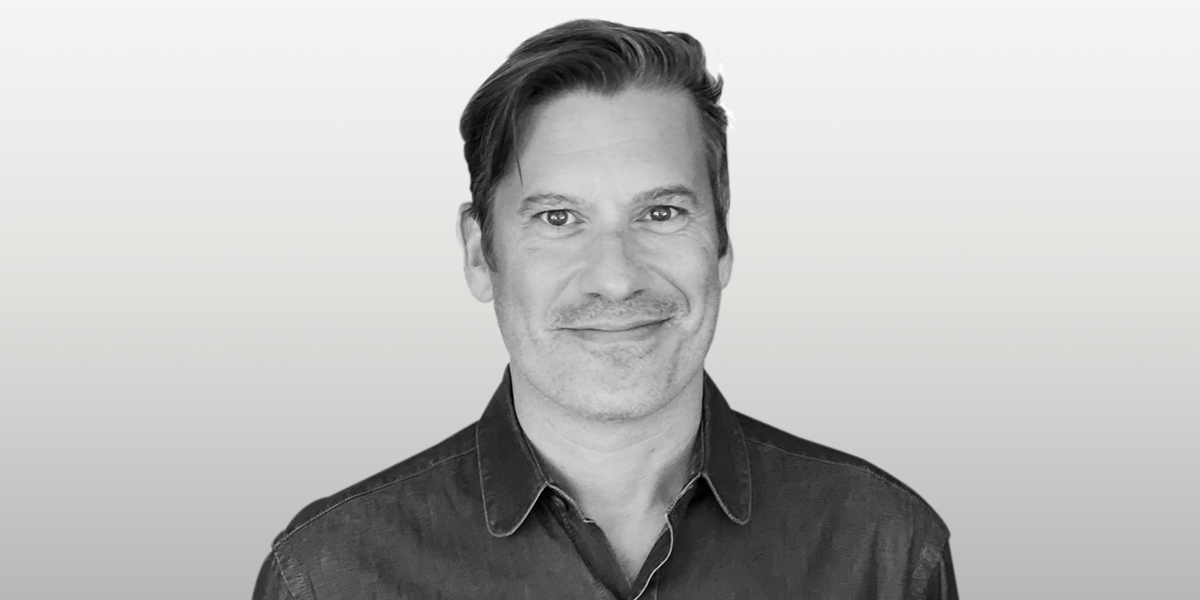In November 2021, Greater Than One (GTO), a privately held, global creative and media agency, appointed Matthew Howes as its new President. As the agency enters its third decade of existence, Howes will be responsible implementing the company’s new strategy aimed at unlocking better value throughout the company to help deliver better outcomes.
PM360 spoke with Howes about how he plans to achieve that goal, what new initiatives the company has in the works, how COVID has had an impact on managing employees amid the Great Resignation era, how client-agency relationships are evolving, and what trends they are already looking at being the most important for 2023.
PM360: What you can share about your plans for the agency in 2022 as you take on the role of President?
Matthew Howes: We’ve got a lot planned. Elizabeth Apelles, our Founder and CEO, made an important decision last year in response to market dynamics to focus on the next decade of what Greater Than One is going to be all about. Historically, the company has excelled in responding to market demands, market needs, and innovations that were happening that other agencies weren’t necessarily ready to own or jump on. But she made the decision to move away from that reactive or opportunistic approach to recognizing that we have many skills and capabilities that are highly valuable to the marketplace but not necessarily conceived that way.
We’re introducing a new model essentially, which I’m calling a Capability Convergence model. We have these great disciplines, including technology, media, and communications that clients like to buy independently, but they would love to buy them all as one. The Capability Convergence model recognizes that most agencies espouse this sort of integration as a way to provide full-service capability. This idea of integration has become so common in the marketplace that everyone assumes that it means something positive. In reality, when you have major holding companies with multiple disciplines across their agencies and you’re forcing them to integrate it waters down and confuses the execution because the disciplines within these agencies are always making sacrifices for each other.
In a way, we are redefining the idea of integration by focusing on convergence. So, instead of taking multiple things and forcing them into one, we are taking multiple things and aligning them on a certain point. We are converging our three disciplines around customers and clients at the right time and at multiple touch points throughout an experience. And we are allowing clients to consume either one capability independently or all three of them or two of them together in a seamless way, in a way that makes sense for them.
So that’s where the agency is headed next year.
When your appointment as President was announced, the press release mentioned having several new initiatives planned for the next six months. So, besides the Capability Convergence model, what else is in the works?
I think we have about six initiatives we are working on. In addition to the Capability Convergence model, we’re also rolling out specific capabilities or additions to capabilities. One is the idea of Technology as a Service, which is basically a subscription service for technology or development projects that are consistent over time, so maintenance projects. For instance, if you have a corporate communications website that needs almost daily updates to the content, we can provide you with a flat or average bill like what you would get from your power company where you pay a consistent amount month over month.
We’ve also gone outside of the U.S. with what we called an OUS on-demand model. We’ve embraced the new workplace which is hybrid. We are now operating with one physical headquarters in New York City and our default approach is that everyone is now remote. At the same time, we’re thinking about how we accommodate folks who need and/or want to work in a physical space over periods of time as well as our clients who may prefer to have a physical in-person meeting as opposed to virtual.
In doing so, we are no longer geographically bound to our physical offices and are able to operate anywhere in the world. So if we have clients with needs in multiple countries throughout Europe, we have the flexibility to more dynamically create teams with broader expertise in multiple countries and adapt to whatever the client needs.
Those are some of the examples of things that we’re doing differently. From an overall philosophy perspective, we’re leaning into the notion of people first and customer-centric strategies. We’re selling clients on people’s time and how that time gets them access to a diversity of experience, thinking, and ideas. These ideas don’t come from a manufacturing process, a specific technology, or a natural resource that we have some exclusive on. They come from people and our ability to bring the best and brightest is the value we are offering.
How are you managing people internally to ensure you are offering that kind of value you promise while also navigating a more hybrid work environment?
As I am sure you have seen, today’s workforce is not feeling totally connected as a result of some of the disruption caused by COVID and other social impacts. That has translated into this mass exodus of people changing jobs and looking for something new. As businesses, we are losing value by losing people so we need to ensure we are offering these people value themselves to attract and keep the best talent. We do that by connecting to their inner purpose.
I’ve gone around to our own employees and done one-on-one interviews to talk about each of their personal purpose. My firm belief is we can tap into individual levels of motivation and passion based on what their purpose is and tie that to the organization. I’ve done that by recognizing the different sources of purpose that we each have and aligning that with our values.
That is why one of our values is independence, leading in self-determination and a level of freedom of responsibility that you have as an individual. The second value is diversity, which is recognizing there’s value in different ways of thinking. The third value is community and recognizing that we have an obligation to serve patient communities—to create better experiences for patients to have better outcomes. That also applies to the different communities of practice within our organization around media technology, account service, communication, development, creative, and ensuring we best serve each of those people internally.
Of course, we also want to serve our community here in New York and other areas. To do that, we have a nonprofit called Greater Good, which does pro bono work with small to midsize nonprofit organizations and advocacy groups. We’ve also developed a platform called Honeycomb Health, which allows people to store their history of family health information for people who are trying to navigate the rare disease space. So as an organization, we recognize the importance of being a part of the greater community.
You referenced how COVID is changing how companies must operate internally, but are you also seeing a change in what clients expect from you?
Yeah, I think the ultimate impact in terms of our relationship with clients is there’s a heightening of emotion. What once before may have seemed a minor issue feels like a bigger issue. What once seemed to be an opportunity for getting together and having great ideation sessions in person now is seen as a challenge. And the expectation from clients is that we are going to guide them more. They’re looking for their agencies not just to deliver on the disciplines that they have traditionally been known for, but to actually develop new capabilities not necessarily just about marketing.
There is now this unmet need among our clients for what I can call internal or marketing interventions. For instance, a couple of clients have come to us saying their sales force over the last year and a half has not been as effective because they don’t know how to operate in this virtual or hybrid environment. They need retraining, reframing, or retooling, and they’re looking for their agencies for help in intervening to make them better. I think you’ll see a lot more agencies trying to jump on the bandwagon of providing what’s essentially development and training through the lens of their particular expertise.
As you look at 2022, are there any other marketing trends or new ways of operating that you think will become more popular throughout the year?
Actually, we’re already looking at 2023 to understand where clients’ heads are going to be and to understand what’s going to be most important to them from an execution perspective. That’s because the majority of brand planning for 2022 is already done, so we want to know what they will be thinking about in their planning for next year.
One of the things we are hearing a lot is capabilities around data and data analytics, which has been continuing over the last few years. Data is ubiquitous. The more channels that are added, the more data we get, the more usage and adoption, the bigger the data becomes. But mining that data, making use of it, and turning it into actionable insights is still the holy grail. It’s still something that nobody has really cracked the nut on how to capture all the value that we believe is in the data.
So, we have heard from clients that are looking to agencies to come up with a new data strategy. That is because a lot of these companies are caught in between with too many different agencies, consulting companies, and pure play data companies all trying to offer them meaningful solutions in this area without delivering the kind of results they want. Plus, a lot of these solutions can be very expensive. So, in general, they are looking for someone who can deliver a solution that is cost effective and able to demonstrate real results quickly.
Finally, do you have a goal that you would like to say you 100% accomplished by the end of this year?
As I mentioned, this year we’ll be rolling out new things, new capabilities, and new offerings. But all of that is to get to a point by the end of the year that we have this new platform for the growth of our business. More importantly, that platform for growth should result in clients being invested in what we can help them achieve. I talked about our Capability Convergence model and bringing together what we can offer in better ways. But really, the goal is to make our clients better. To make society at large better. It’s about working with a client on their solutions or share of the market for the purpose of improving patient outcomes.
I know that’s been a hot topic in the healthcare space for several years now, but we’ve moved beyond focusing on business objectives. Instead, the focus is on improving outcomes, knowing that when outcomes are improved business follows. But to change outcomes, you have to understand that part of the challenge is changing behavior.
The only way to influence human behavior is to really look at the underlying behaviors that need to change. This means doing more then getting their attention or engaging with folks. We have to determine the sphere of influencers that are required to help them change behavior. What content can we serve them and in what context is that going to happen? If we think about that experience as a way to intervene in the market and change behaviors, that’s the thing that’s going to drive those better outcomes. When that becomes the priority, it will significantly change the market both in terms of what our clients start asking us for as well as what we are leading the market with.
This goes back to the very beginning of our conversation. We have made the decision to go from the improv player with our clients to scripting things a little more formally in order to achieve those better outcomes. We see all of this in front of us. And by this time next year, when you think of Greater Than One, it will be as a different entity than we’ve been known for.









